Leslie David: from Jean-Paul Gaultier to Björk to M/M Paris
How, against the odds, Leslie David discovered graphic design and went on to work with the brightest lights of the fashion world.
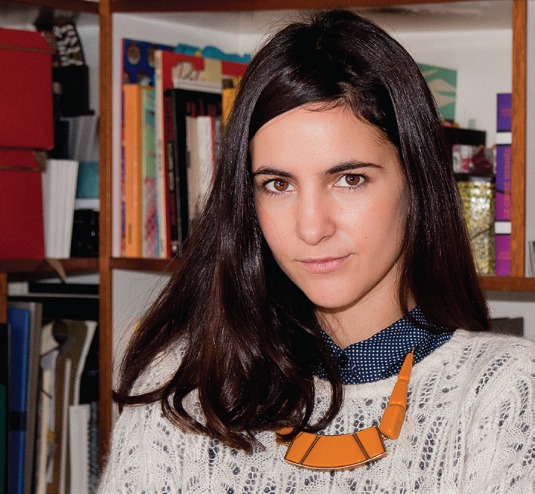
A large, typically Parisian flat in the city's second arrondissement is where Leslie David spends her working days. Outside, businessmen dressed head-to-toe in grey fill the street on the way to their offices, but inside is a different story. David's approach, both in life and work, is far from grey. Past projects have seen the designer scraping thick rainbows of paint across old black-and-white photos, she gets giddy over big production budgets because they afford her the chance to go crazy with print finishes, and she spends her spare time hunting for new tools to play with in the craft section of children's shops.
We caught up with her to find out how she went from a childhood growing up in a small town in the south of France with artist parents, poring over glossy fashion mags and harbouring an obsession with Jean-Paul Gaultier, to an award-winning graphic designer and illustrator working with some of the biggest names in high-end fashion.
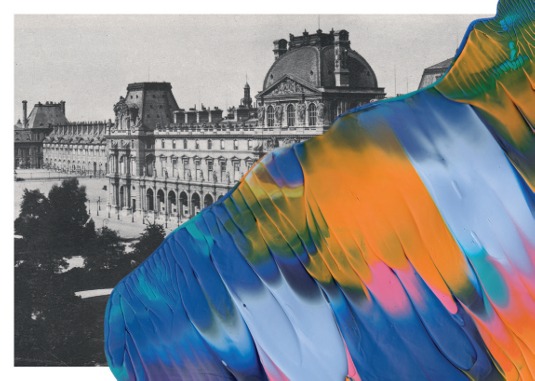
Art has played a big role in your life. For you, how clear is the distinction between art and graphic design?
When I do self-initiated projects or exhibitions, I don't pretend to be an artist, I don't have this ambition. I have been fed by art, and especially graphic art, during my childhood. This is now a very intuitive means of expression, and I use it to help other people in their communication. It might be weird but I really like to have a brief and boundaries in my work, I think that's challenging and it helps me to contain my creativity.
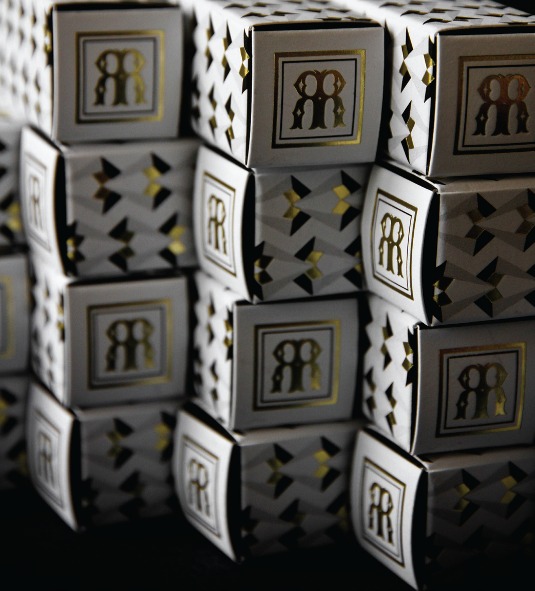
Some of your most distinctive work features techniques associated with fine art. What does this bring to your designs?
I like to play and mix old and new techniques, like painting on old pictures. It doesn't always work, but it always brings something unpredictable and inspiring. I love art and craft supplies, and when I travel I always try to visit the art supply shops. I like the children's department in particular for crazy things, like colour-changing pens, finger paints or stamps. Last summer I found spray pens on a market in the south of France. A guy was doing a demo, I stayed 30 minutes looking at him, he was so good - although he was doing very ugly drawings! It seemed very simple. When I came back home I was really sad, because they were of course actually super-difficult to use.
You originally studied at the École des Beaux-Arts in Lyon. What prompted you to switch degrees?
I stayed only one year there, because I realised I needed to learn to do something with my hands. The learning there was too conceptual for me. There we were doing exercises like drawing with the left hand, upside-down, drawing while you are screaming or with blind eyes. It was very fun, but I didn't think I was really learning something useful - I thought I had to learn how to draw or paint before experiencing this kind of stuff. After one year I went to L'École des Art Décoratifs de Strasbourg, which was famous for its academic learning. And it was true, we had hours of life drawing lessons every week, which made me so happy.
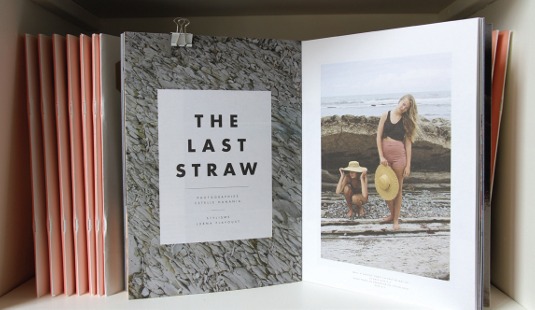
You've spoken of your love of fashion when you were younger, and wanting to become a stylist at one point...
At 10 I was so in love with Jean-Paul Gaultier that my dad had to explain to me what 'gay' means - I was really disappointed! I had perfumes and fashion ads from my mum's Marie Claire everywhere in my bedroom. I never really wanted to work for fashion, because at school, fashion - and advertising too - was considered like evil.
When I was a teenager I started to buy magazines of my own: Vogue, Crash, Purple, and The Face, which was my favourite. I still have these old magazines, but they are like lace now.
I realise now that because of Jean-Paul Gaultier I discovered Björk - I was a big fan, and I think at the time I was the only one to know her in my small school - and then because of Björk I discovered M/M Paris and so discovered the job of a graphic designer. And I realised this job was exactly what I wanted to do.
Since then you've worked with the likes of Chanel and Givenchy. What is it about this sector that attracts you?
I love the story of these historical brands, I love that they have been around for ages. I love that when I read Vogue or Marie Claire from the '50s, there are ads from brands still existing today, and they are still making girls dream. However, I'm not the kind of girl who dreams of luxury products, I almost don't have any and I don't really care.
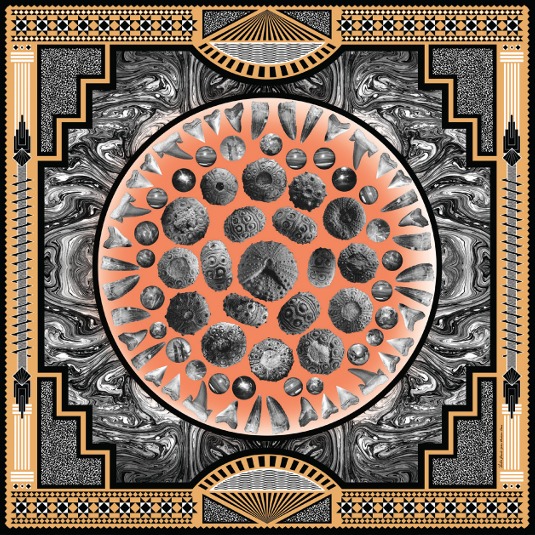
To be honest, the other thing with working for these kinds of clients is the budget they have for production. It's so nice not to hear: "Foil stamping? No, lets do regular CMYK," or the usual: "We have a really small budget for the production, don't go too crazy." I hear that every day and it's depressing, I want to go crazy with printing and papers.
How do you put your own stamp on work for a client with such a defined aesthetic identity? Is there still space for pushing boundaries?
In fact, often, big luxury brands are more interested in bringing something new and with a strong aesthetic than smaller brands. They have already a strong identity that people know well, they don't need to stay focused on it, they can try things and surprise their customers. Of course you can't do whatever you want, but I always find a way to express myself and enjoy it.
You also regularly work with music clients. Do you find this is this a different kind of experience?
Creating artwork for music is, in general, a real team effort with the musicians. We are not working on selling a product, we are selling a person, or a group of people's art, which is really different to working for a brand. There are more emotions. Some artists are really easy and let me be quite free to propose things, others have a precise idea of what they want. Getting inspired by music is also really different to getting inspired by images, or a classic brief.
What is really exciting and emotional is to listen to music that is still a secret, a work in progress. I'm working very closely with an artist who is building up his work at the same time, that's really fascinating. I love to listen to those songs before everybody else.
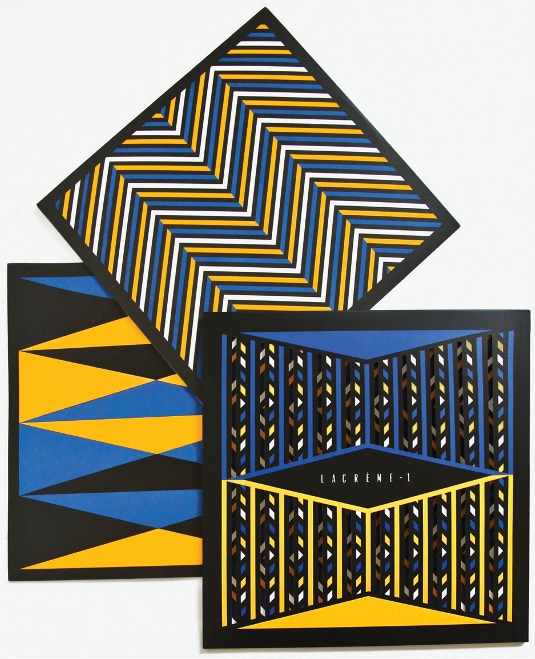
Do you feel you have a particular aesthetic that is distinctive to you?
My style is built on inspiration like psychedelic '70s posters and geometric shapes from the art deco period. It's not a matter of choosing between square and circle shapes, it's a matter of melting them all together.
If I had to pick a project that represents me best, it would be the collaboration two years ago with the French collective Andrea Crews, that was a series of scarves. The frame was designed with many geometric layers, and the heart was more expressive with collages of shells, or a sunset and sea landscape. I was very happy with project because more than a graphic picture, it was a wearable, moving object. It's nice to have a real product in your hand at the end of a project.
Words: Ruth Hamilton Photography: Fred Lahache
This article originally appeared in Computer Arts issue 222.
Liked this? Read these!
- Illustrator tutorials: amazing ideas to try today!
- Create a perfect mood board with these pro tips and tools
- The ultimate guide to logo design

Thank you for reading 5 articles this month* Join now for unlimited access
Enjoy your first month for just £1 / $1 / €1
*Read 5 free articles per month without a subscription

Join now for unlimited access
Try first month for just £1 / $1 / €1
Get the Creative Bloq Newsletter
Daily design news, reviews, how-tos and more, as picked by the editors.
The Creative Bloq team is made up of a group of design fans, and has changed and evolved since Creative Bloq began back in 2012. The current website team consists of eight full-time members of staff: Editor Georgia Coggan, Deputy Editor Rosie Hilder, Ecommerce Editor Beren Neale, Senior News Editor Daniel Piper, Editor, Digital Art and 3D Ian Dean, Tech Reviews Editor Erlingur Einarsson, Ecommerce Writer Beth Nicholls and Staff Writer Natalie Fear, as well as a roster of freelancers from around the world. The ImagineFX magazine team also pitch in, ensuring that content from leading digital art publication ImagineFX is represented on Creative Bloq.
